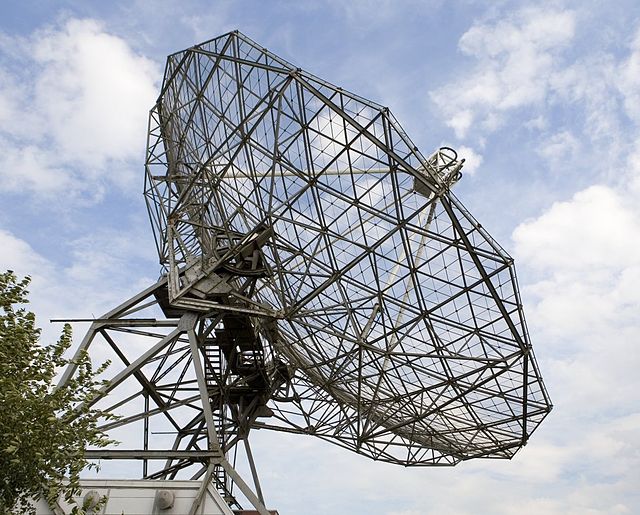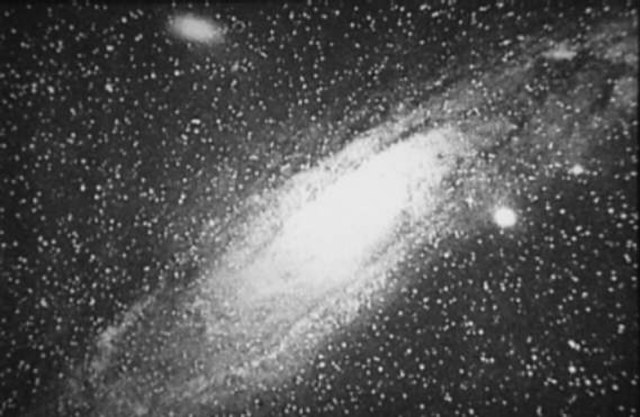Jan Hendrik Oort was a Dutch astronomer who made significant contributions to the understanding of the Milky Way and who was a pioneer in the field of radio astronomy. The New York Times called him "one of the century's foremost explorers of the universe"; the European Space Agency website describes him as "one of the greatest astronomers of the 20th century" and states that he "revolutionised astronomy through his ground-breaking discoveries." In 1955, Oort's name appeared in Life magazine's list of the 100 most famous living people. He has been described as "putting the Netherlands in the forefront of postwar astronomy."
The single dish Dwingeloo Radio Observatory, the Netherlands, 2007.
Westerbork Synthesis Radio Telescope, the Netherlands, 2007.
Oort by an image of the galaxy Messier 81.
Commemorative plate at the house where Jan Oort was born in Franeker (Zilverstraat 18)
The Milky Way is the galaxy that includes the Solar System, with the name describing the galaxy's appearance from Earth: a hazy band of light seen in the night sky formed from stars that cannot be individually distinguished by the naked eye.
The Galactic Center as seen from Earth's night sky (featuring the telescope's laser guide star). Listed below is Galactic Center's information.
The Milky Way as seen from a dark site with little light pollution
Photograph of the "Great Andromeda Nebula" from 1899, later identified as the Andromeda Galaxy
Bright X-ray flares from Sagittarius A* (inset) in the center of the Milky Way, as detected by the Chandra X-ray Observatory.








